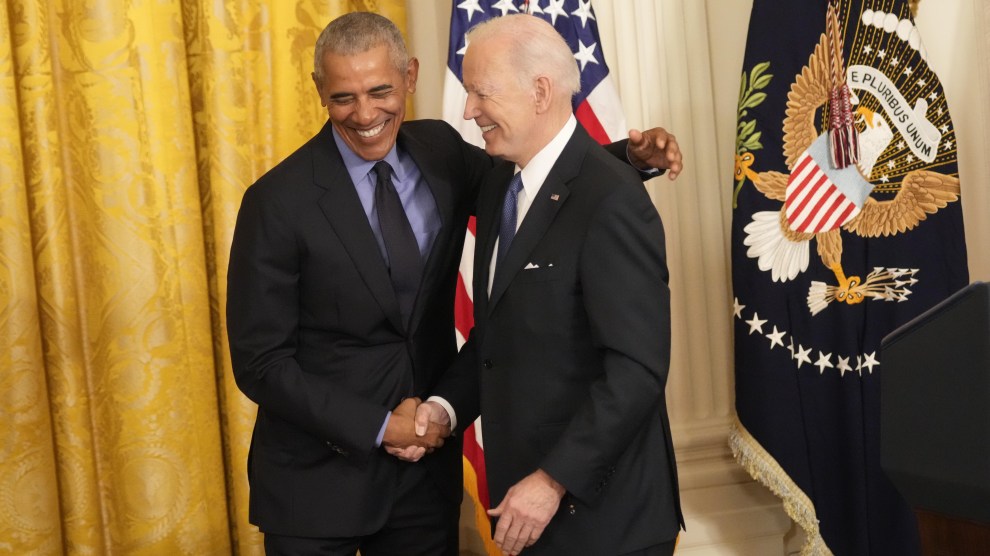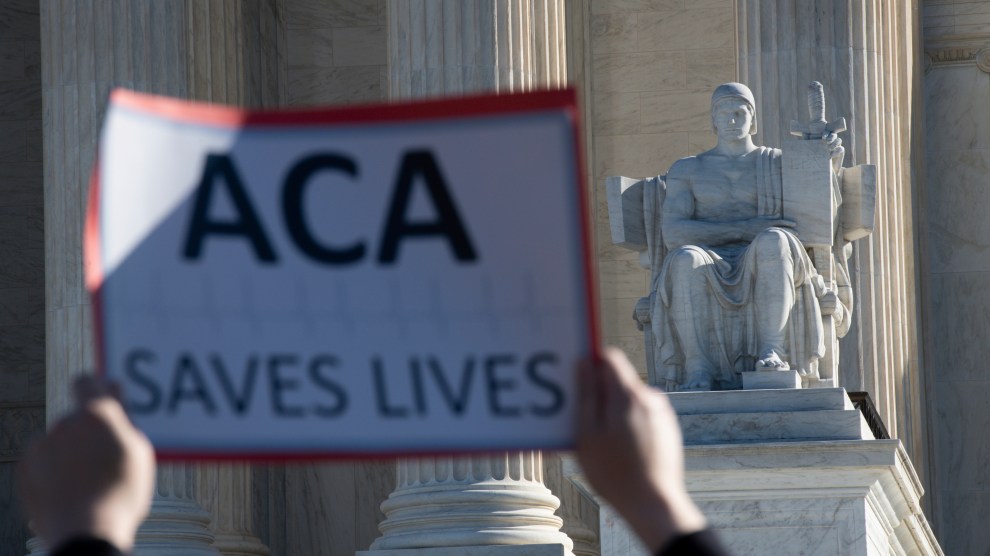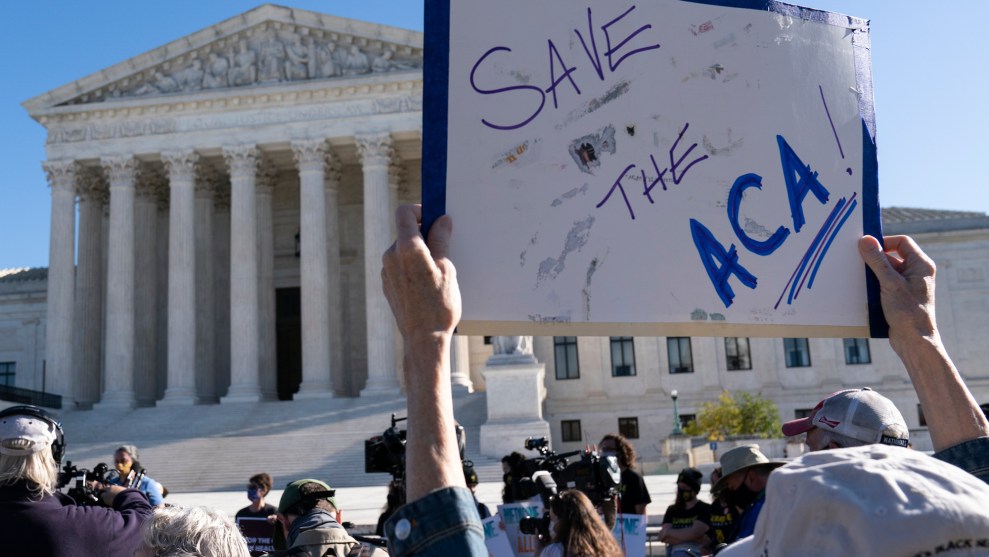
Chris Kleponis/Pool/CNP/Zuma
More than a year into his presidency, Joe Biden trotted out his former boss, Barack Obama, to announce an improvement on the Affordable Care Act—and gin up some much-needed enthusiasm ahead of the midterms.
The change is minor, but consequential. Today, the administration announced a proposed fix to the “family glitch”: a problem in which some family members of ACA enrollees are ineligible for the premium tax credit they need to keep their coverage affordable. When individuals purchase health insurance through their employer, the ACA subsidizes costs exceeding 9.83 percent of household income, which is the ACA’s barometer for affordability. But affordability is determined by how much it costs to insure an individual, not including the individual’s family members. Consequently, some low-income workers who spend more than 9.83 percent of their household income on employer-provided health insurance for themselves and their families do not receive the subsidy.
Biden’s proposed rule would change that. There will still be a comment period, and it will take time to implement. But it’s something that Biden can do through executive order—avoiding the Sisyphean task of trying to convince gridlock experts like Senators Joe Manchin and Kyrsten Sinema—that will help 1.2 million people get cheaper health care.
Today’s event marked an executive accomplishment—albeit one affecting a slim minority of the population—but it was primarily a bit of political theater by which Biden could reap the benefits of Obama’s charm. It was Obama’s first return to the White House in five years. The former president jokingly addressed “Vice President Joe Biden.” He reminisced on the difficulties of passing the Affordable Care Act in 2010 despite strong Republican opposition. The two men laughed in front of cameras.
More than a year into his presidency, Joe Biden trotted out his former boss, Barack Obama, to announce an improvement on the Affordable Care Act—and had a little fun doing so. https://t.co/EOJLdNjkwW pic.twitter.com/J0sxb7Y0Vk
— Mother Jones (@MotherJones) April 5, 2022
You can’t blame Biden’s attempt here: People like Obama. Sure, his approval rating dipped after the Affordable Care Act was signed into law—he joked today that the website crashing didn’t help—and Republicans regained the House in the 2010 midterms, stifling Obama’s ability to get much else done. But by the time Obama left office, 58 percent of Americans approved of his job performance, not far behind President Clinton’s approval rating (61 percent), according to the Pew Research Center.
And, after a decade of Republican promises to repeal and replace Obamacare—and three Supreme Court challenges that failed to undo the law—people are starting to get used to Obama’s signature legislative achievement. In 2017, more people viewed the ACA favorably than unfavorably, according to the Kaiser Family Foundation, and that trend has continued to the present day. In March 2022, 55 percent of Americans approved of the ACA, while 42 percent didn’t.
Why? Because, even if the law isn’t perfect, people like having health insurance. Protections for people with preexisting conditions are hugely popular, as is the rule that allows young adults to stay on their parents’ plans until they’re 26. Unlike the infrastructure bill, whose benefits it will take years to reap, Obamacare has immediately and measurably improved people’s lives.
But, whether because of flawed messaging, the material benefits of culture wars, or the insufficiency of technocratic fixes, it’s been hard for voters to feel that Democrats have actually helped them. The midterms might be a foregone conclusion. But if Democrats want to win the next presidential election, or any, they need to keep finding ways to make people’s lives better—and brag about it.














